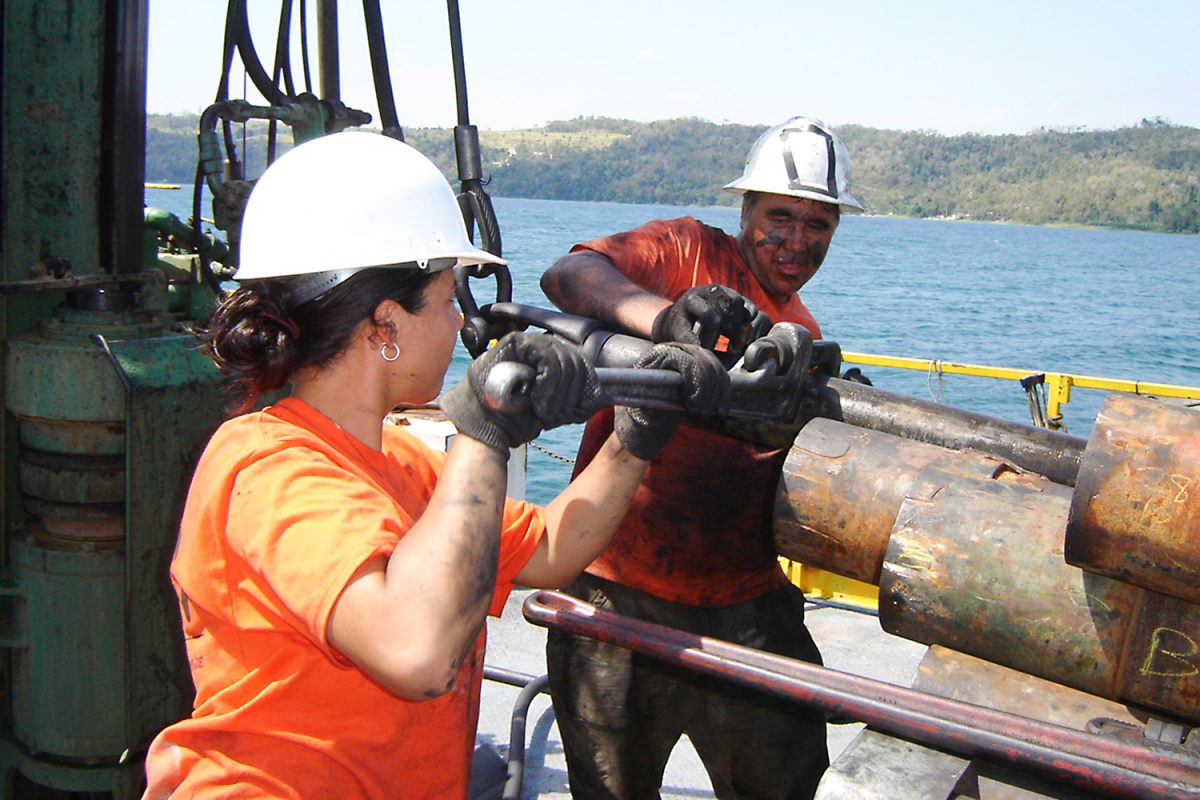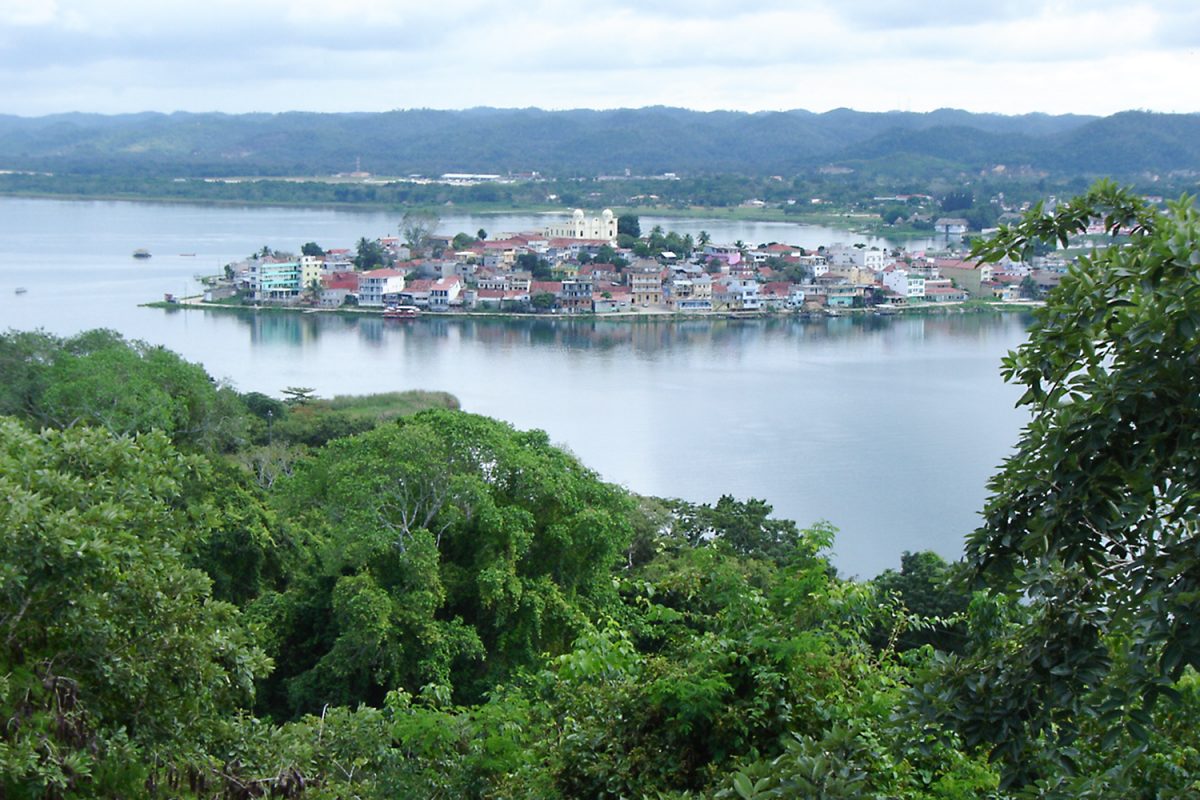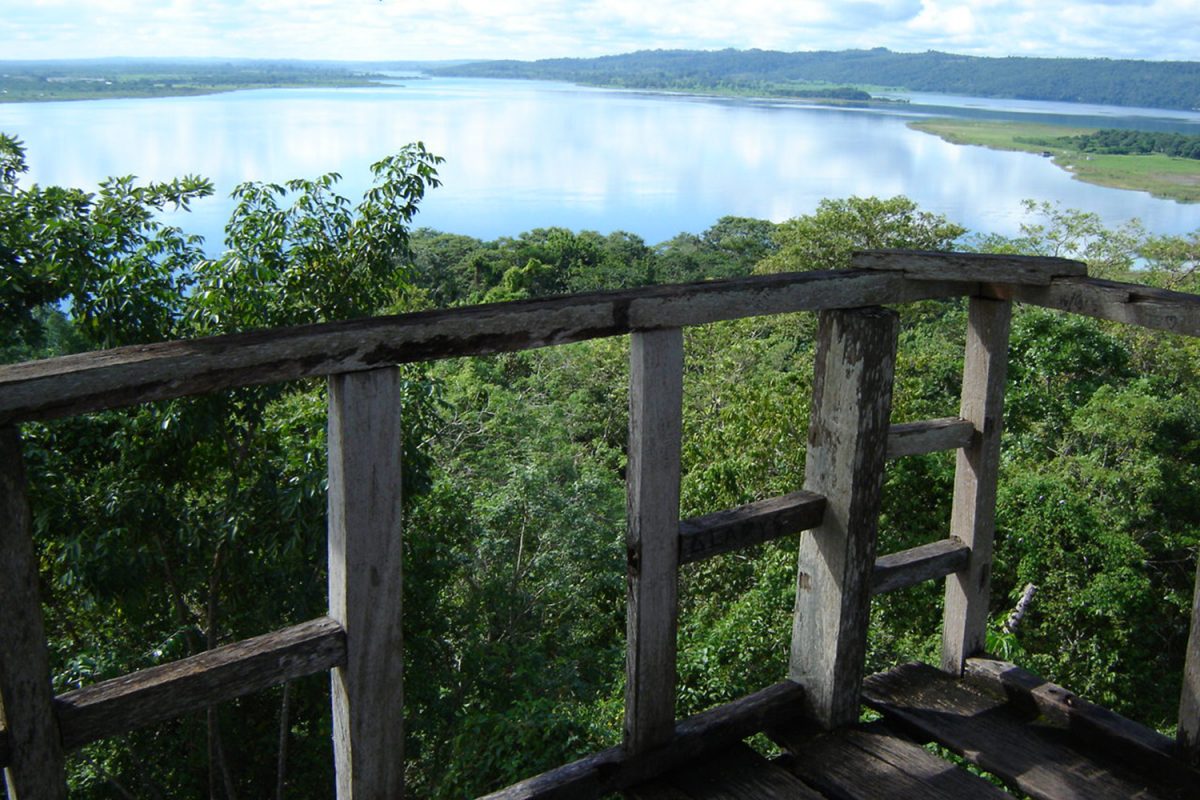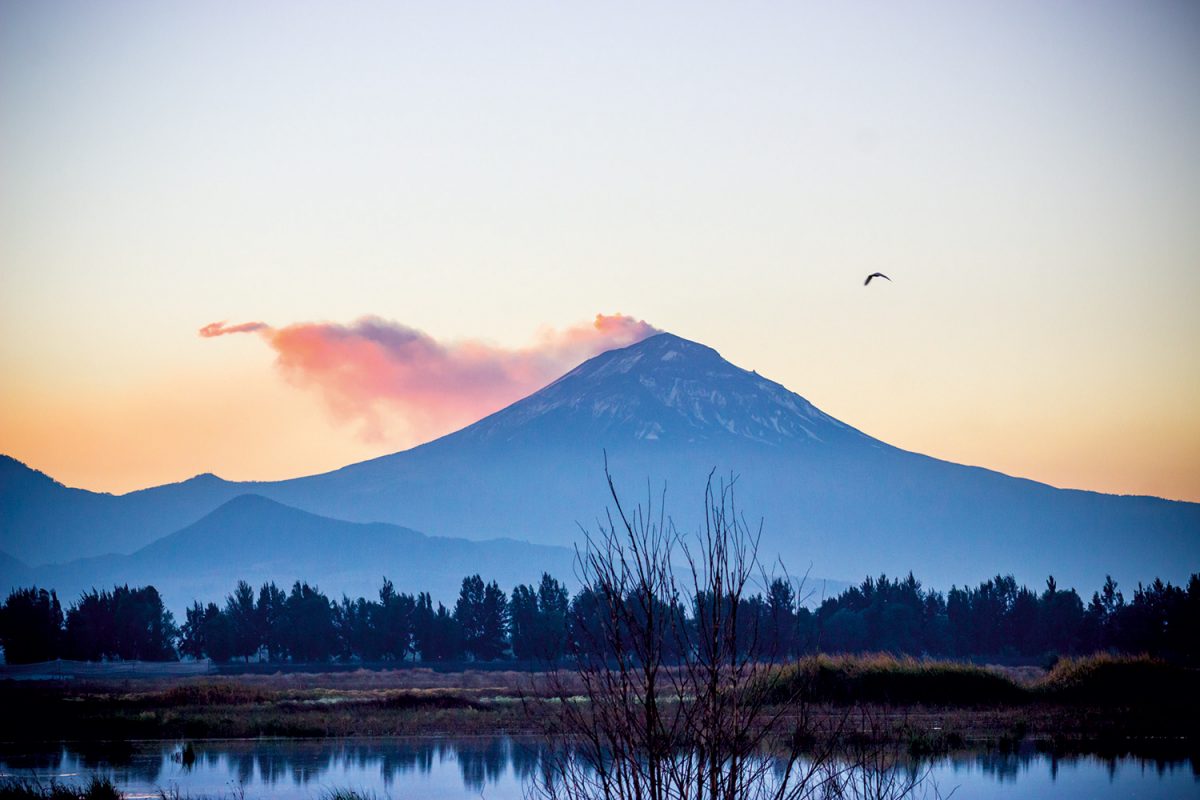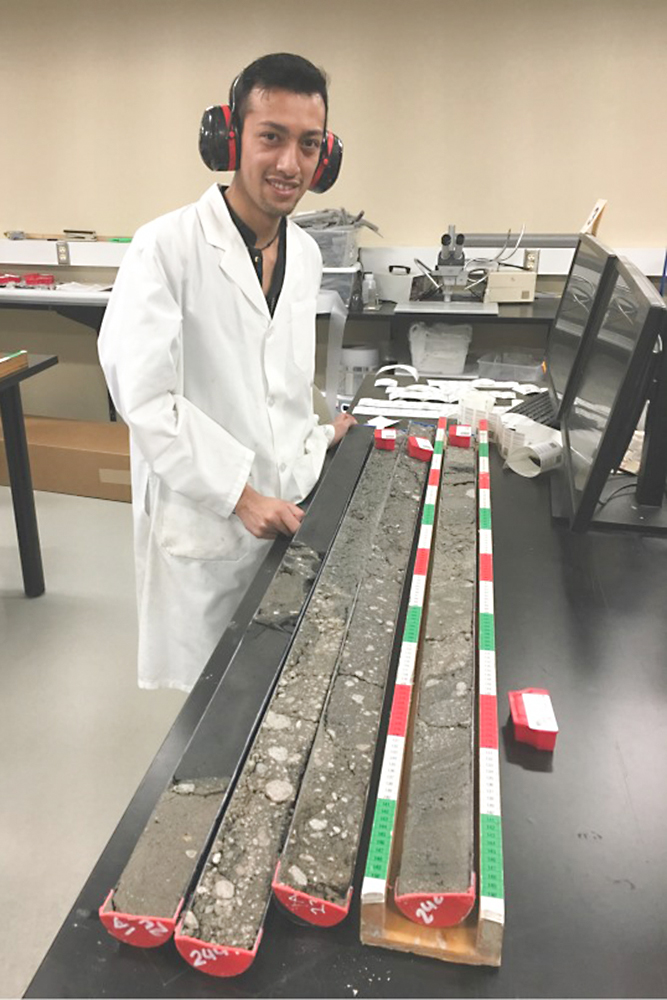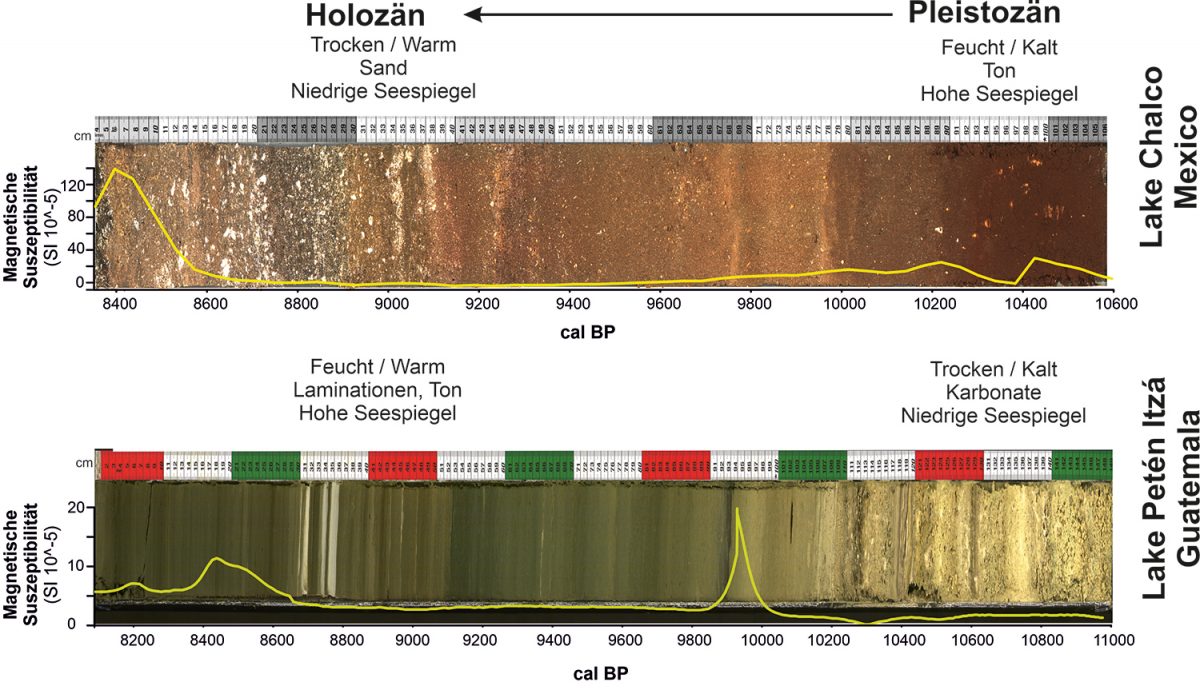The Secret of the Lake Sediments Research project reconstructs the climate history of America's tropics
How has the climate developed over the past 135,000 years in the tropics of North and Central America? And how have the ecosystems reacted to the climate changes? In an international project led by Professor Antje Schwalb, head of the Institute of Geosystems and Bioindication (IGeo) at TU Braunschweig, and Dr. Liseth Pérez, research associate at IGeo, a research team is getting to the bottom of these questions – literally.

A deep scientific drilling was carried out in Lake Chalco in central Mexico in 2016. The Teuhtli volcano, seen here slightly to the left of the centre of the image in the background, is located near the lake. Photo credit: Iván Martínez
Because in order to reconstruct the climate history of the northern Neotropics, deep drilling was carried out in Lake Chalco in central Mexico and in Lake Petén-Itzá in northern Guatemala. The sediments in these lakes are natural climate archives that provide information about the conditions in a particular geological era.
“The Neotropics, which includes the mainland area from central Mexico to South America, are a region of central importance for global climate dynamics,” says Liseth Pérez. “We are studying how and at what rate ecosystems have adapted to changing environmental conditions in order to better predict how the sensitive ecosystems of the Neotropics will evolve under an expected drier and warmer climate.”
Valuable treasure for paleoclimate researchers
The deep drilling took place in Guatemala in 2006 and in Mexico in 2016. “When drilling 300 metres deep in Lake Chalco, the cores contain sediments from the past 400,000 years. This is a valuable treasure for paleoclimate researchers,” says Liseth Pérez, who was on site during both drillings. The sediment cores from the lakes are archived in the LacCore laboratory at the University of Minnesota (USA) and are accessible to researchers worldwide.
“For our current study, we order samples of the lake sediments to analyse them with a multi-proxy approach,” says the scientist. A new organic temperature proxy, a temperature indicator, is also used: the HDI26 (heterocyte diol index of 26 carbon atoms) was developed by an international research team led by Dr. Thorsten Bauersachs from the Institute of Geosciences at Kiel University (CAU), who is also involved in the project.
Newly developed temperature proxy in use
This proxy makes it possible for the first time to reproduce the water temperatures of continental waters. With the help of HDI26, a team of researchers – including Thorsten Bauersachs and Antje Schwalb – has succeeded in reconstructing the climate history of East Africa using sediment deposits from Lake Tanganyika, Africa’s second largest lake – over the last 40,000 years. The international study, led by CAU, was recently published in the journal “Nature Communications”.
Back to the tropics of North and Central America: the research team, which since this year also includes doctoral student Rodrigo Martínez-Abarca, has already begun analysing the data. In the next step, the scientists of the study will compare their results from the climate reconstructions of the deposits of Lakes Chalco and Petén-Itzá with those of other continental and marine climate archives from the Neotropics to clarify, for example, whether and when the weather kitchen was more active in the Atlantic or the Pacific.

